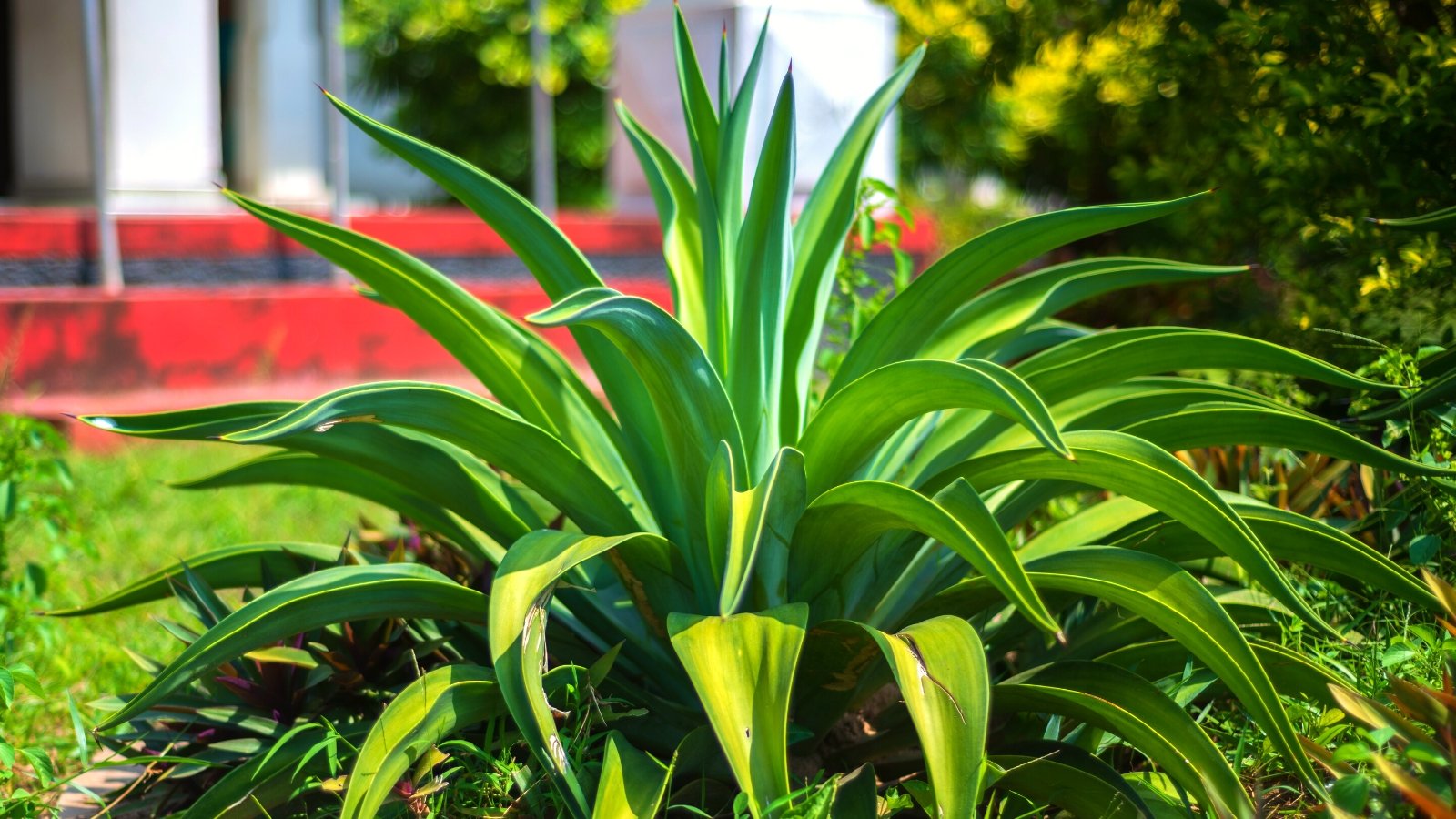[ad_1]
Why develop agave? Successfully, these low-maintenance crops can add magnificence with their attractive foliage in every your indoor houseplant assortment and your outdoor landscaping. Plus, most varieties will flower at least as quickly as of their lifetime. Rising every indoors and open air has its execs and cons.
For rising indoors, you’ll want to pick small, compact varieties that do properly in containers. You acquired’t wish to supply any consideration to your rising zone or native climate because of indoors, chances are you’ll create the suitable conditions. Indoors, they like a shiny, sunny window and should dry out totally between waterings.
For rising agave open air, mature dimension does not matter as lots. Since you don’t ought to embrace the crops in a pot, chances are you’ll choose varieties with quite a lot of mature sizes. Some can attain as a lot as 10 toes tall and broad when grown open air. For outdoor crops, you’ll wish to take into consideration your USDA rising zone and whether or not or not or not it will get too chilly for these outdoor crops to survive.
Indoor Varieties
As talked about above, agave varieties that do properly indoors embody small and compact varieties. These varieties is also pint-sized, nevertheless they aren’t fast on magnificence. Each choice has its private distinctive foliage, and they also’re fully fitted to life on a windowsill.
Agaves do not require lots by the use of take care of a houseplant. Watering them too often or fertilizing them may trigger them to die. For many who often find yourself forgetting to water your houseplants, then agave is probably the plant for you!
When rising indoors, you might want to choose a container with a drainage hole, nevertheless ditch the saucer as you don’t must create any standing water. Overly moist soil will likely be detrimental. And whereas these varieties are good for indoors, chances are you’ll develop most of them open air, too!
Blue Glow
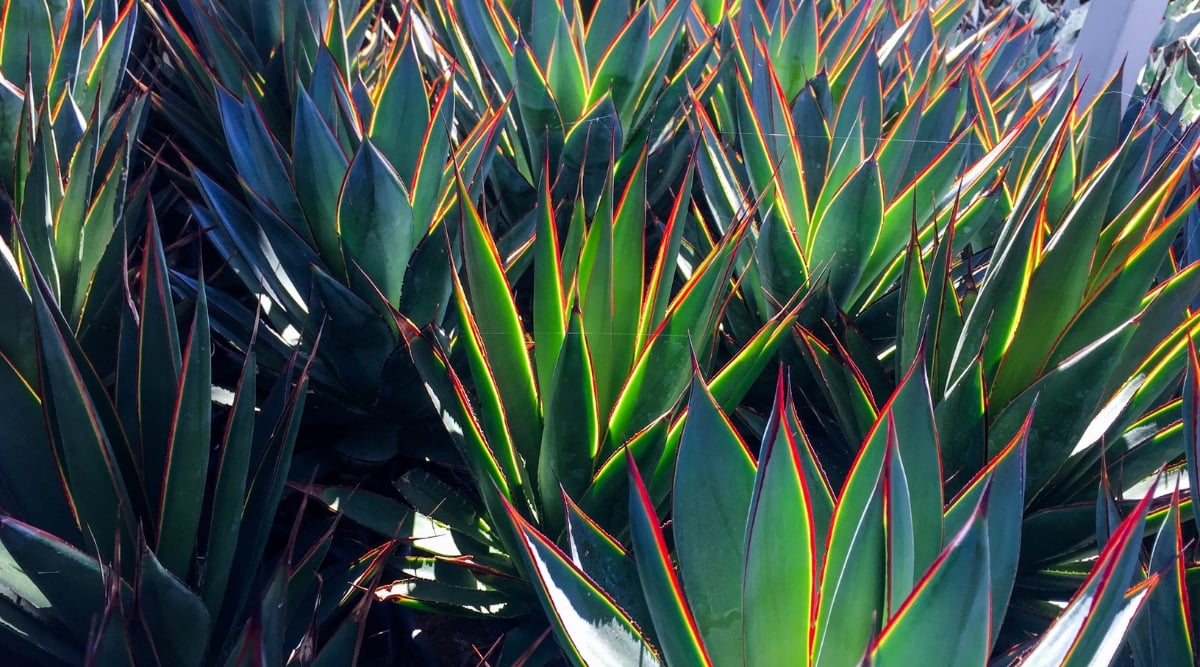

‘Blue Glow’ Agave is a relatively new cultivar, which is a hybrid of Agave attenuata and Agave ocahui. And whereas it doesn’t resemble its father or mom crops, it does showcase attractive darkish blue-green leaves with yellow and purple margins. These margins seemingly glow when backlit by the photo voltaic, thus the title ‘Blue Glow’.
Full photo voltaic is best for this choice, nevertheless it would moreover take care of dappled daylight. Its mature dimension is 2 to a couple toes tall and broad, which makes it good for rising in containers indoors.
Artichoke
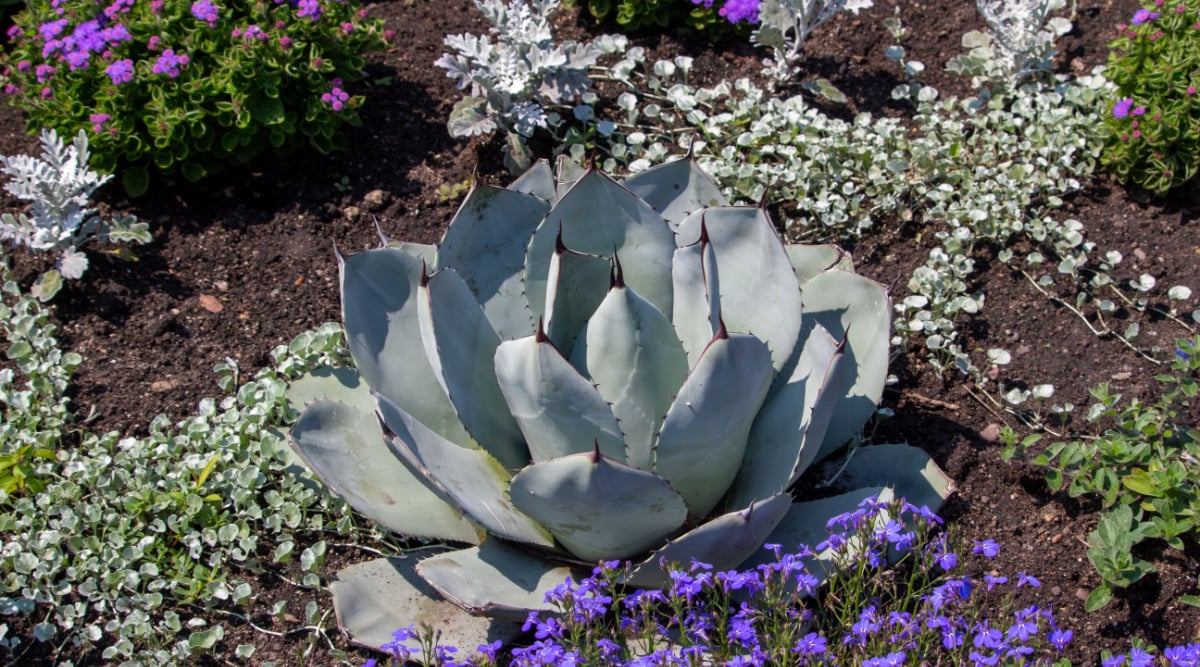

Agave parryi var. Truncata has broad, blue leaves with maroon spines that resemble an artichoke. Subsequently the frequent title, artichoke agave. This choice is native to Central Mexico, which makes it terribly drought-tolerant and low-maintenance.
It does best in full photo voltaic, which will likely be provided indoors by using mirrored daylight as properly. You might create mirrored mild by using foil, strategically positioned mirrors, or complement with indoor develop lights. Its mature dimension is two toes tall and three toes broad.
Twin Flowered
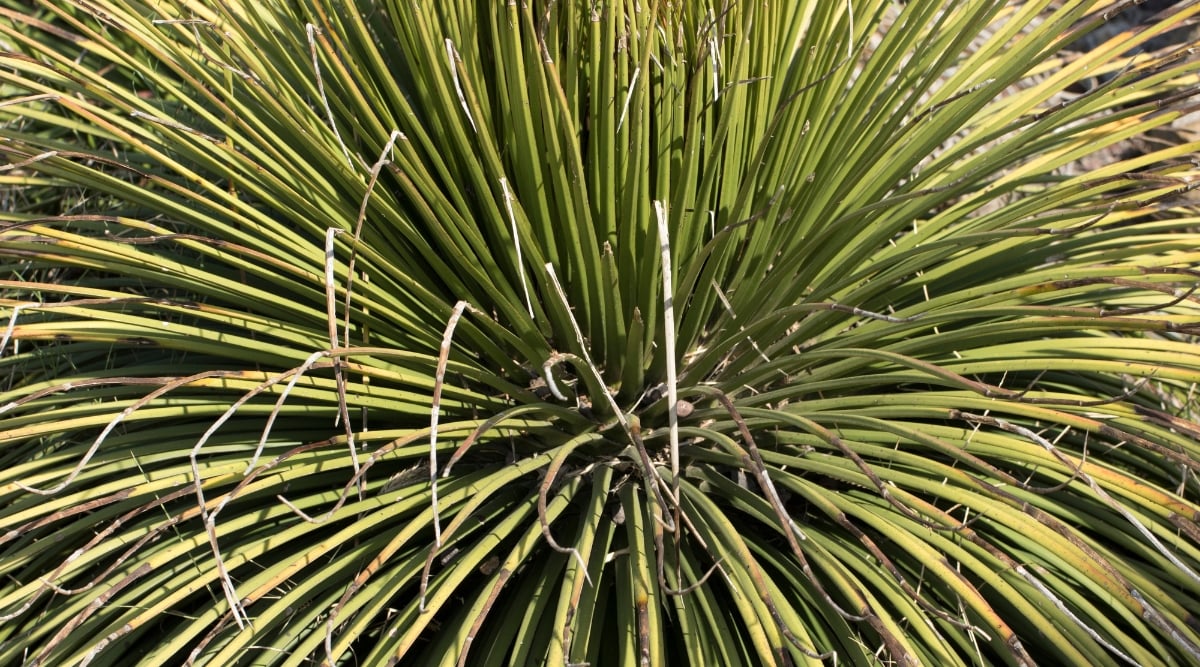

Agave geminiflora, or twin-flowered agave, has prolonged, slender leaves which set it except for totally different agaves. The prolonged, skinny foliage resembles a pin cushion. Its look can add uniqueness to your indoor succulent assortment.
It does best in full photo voltaic, which, as talked about above, will likely be provided indoors by using mirrored daylight as properly. Its mature dimension is three toes tall and 4 toes broad.
Agave schidigera
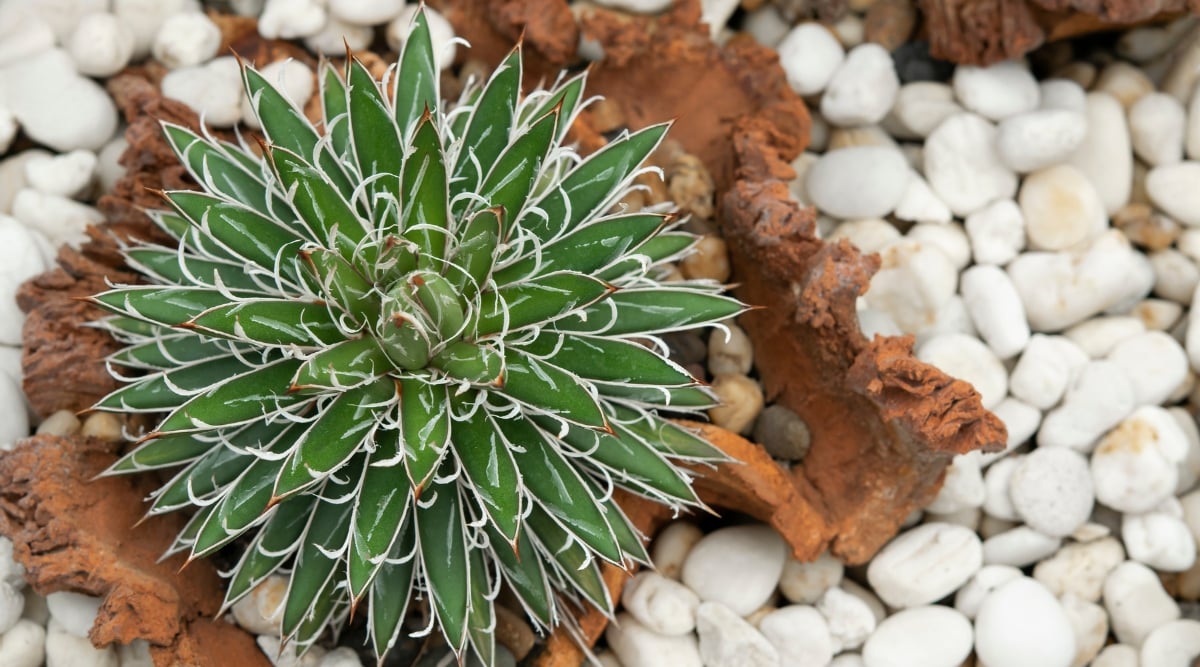

Agave schidigera has curly white fibers on each shiny inexperienced leaf. The white markings on the leaves enhance the excellence of the inexperienced foliage. This choice is native to central Mexico.
It requires full photo voltaic or filtered afternoon shade. Its mature dimension is one foot tall and one to 2 toes broad.
King Ferdinand
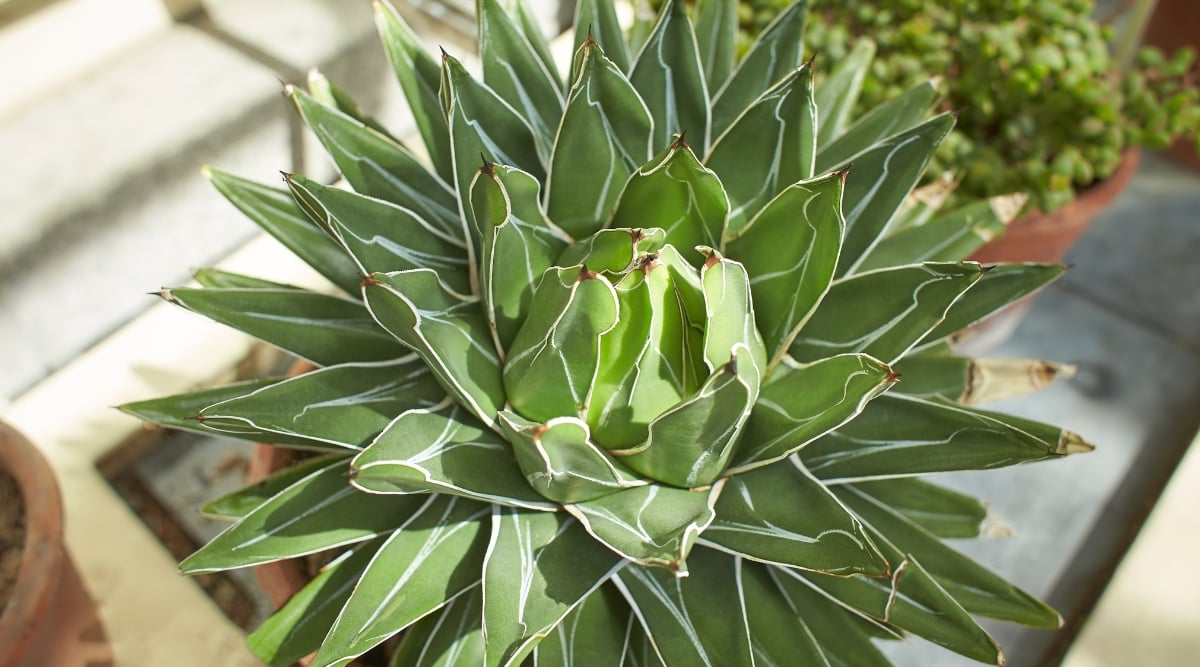

Agave Ferdinandi Regis bears a placing resemblance to ‘Queen Victoria’ Agave. So much so that it was as quickly as thought that it was a naturally occurring hybrid of Agave victoriae-reginae, nevertheless it absolutely has since been acknowledged as its current choice.
Moreover it’s recognized typically as King of The Agaves. This choice has darkish inexperienced leaves, white margins, and sharp terminal solutions. It grows in an open rosette, which appears to be beautiful in a container. It requires full photo voltaic and wishes an notably sunny window when grown indoors. Its mature dimension is one to 2 toes tall and broad.
‘Compacta’ Queen Victoria
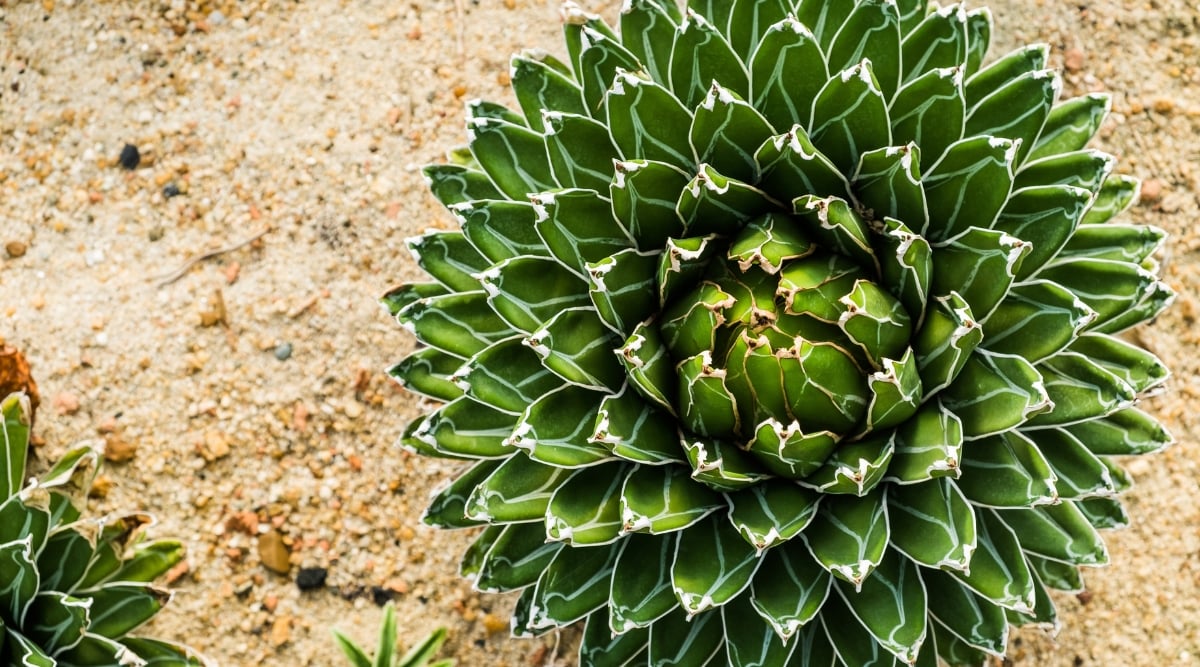

Agave victoriae-reginae ‘Compacta’ is a compact, container-friendly cultivar of Agave victoriae-reginae. You might even see this choice at desert botanical gardens. It’s among the many most beautiful agaves.
It has darkish inexperienced leaves and vibrant white markings. Very like the above-mentioned ‘King Ferdinand’, nevertheless with way more distinction. It requires full photo voltaic, ideally a extremely sunny window when grown indoors. Its mature dimension is decrease than one foot tall and one to 2 toes broad.
Exterior Varieties
When selecting an agave choice to develop open air, you’ll wish to take into consideration your USDA rising zone. Proper right here, we’ll embody that data with each choice in order that you might resolve if it will develop open air in your house. The rising zone signifies the frequent low temperature in your house. That’s essential to know for multi-annual crops like agave since they’re going to be spending the winter outdoor.
Agaves are native to the Southern United States, Central Mexico, the Caribbean, and elements of South America. For that motive, they develop best in Southwest and Mediterranean climates, nevertheless some are pretty chilly and hardy. To survive the winter, like most agaves, they will need well-drained soil. Standing water in colder months may trigger damage and plant lack of life.
Golden Flowered Century Plant
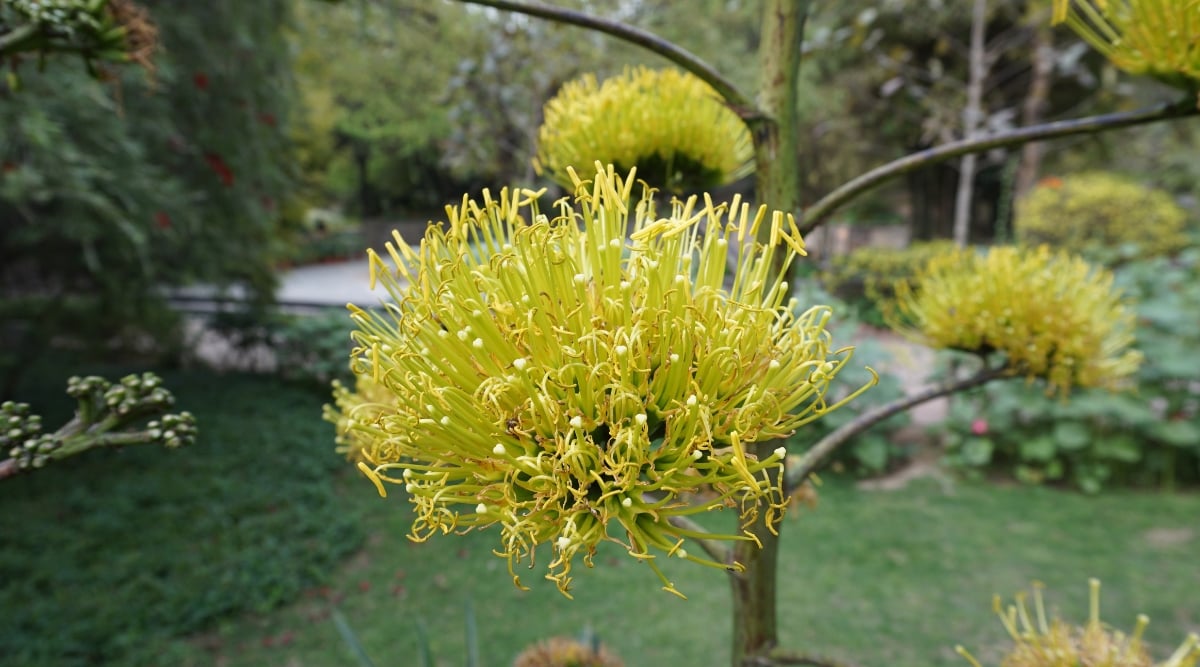

Agave chrysantha can also be known as the golden flowered century plant. This evergreen agave choice varieties a really perfect rosette made up of grey-green leaves. The sword-shaped leaves develop in a mound, giving it a nice spherical contour. The leaves are lined with spines alongside the edges and have a sharp terminal spine.
It requires full photo voltaic and well-drained soil. It is every drought and deer-resistant. Its mature dimension is 2 to a couple toes tall and 4 to five toes broad.
Harvard
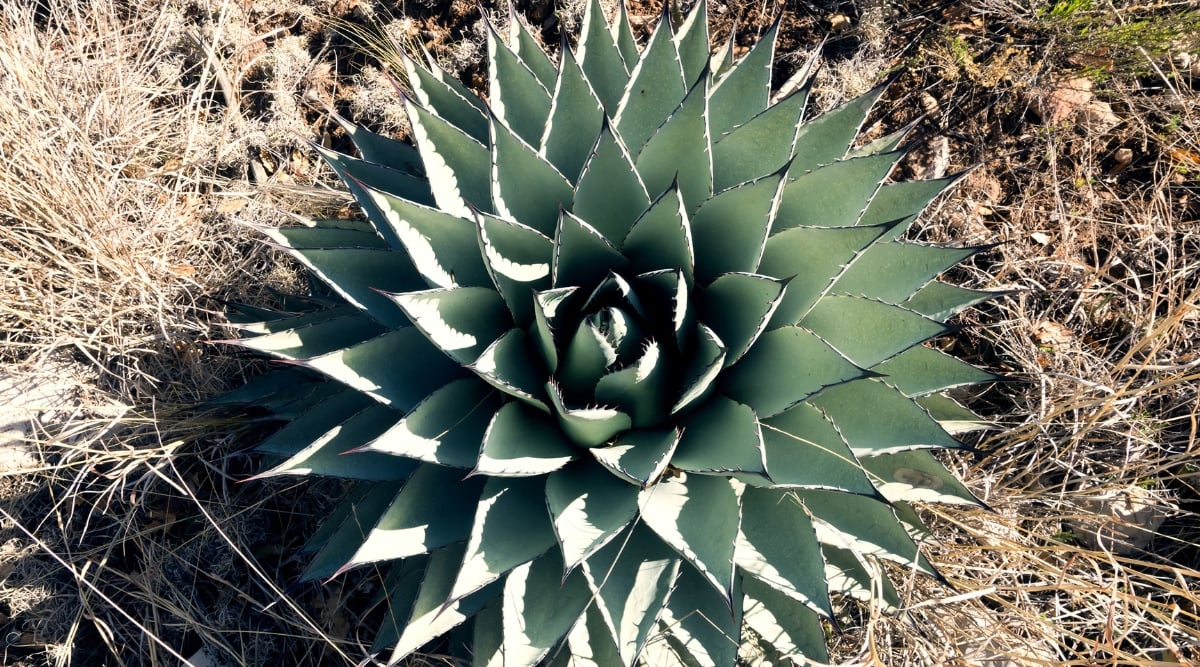

Agave havardiana can also be known as ‘Harvard’ agave. It has beautiful silver-gray foliage with fleshy and broad, cupped leaves. The leaves are intently lined with darkish brown enamel and topped with a extremely sharp black terminal spine.
This choice is terribly chilly hardy and will likely be ground open air in USDA rising zones 5-10. It may probably withstand temperatures as little as -20 ranges Fahrenheit (-29 ranges Celsius)! Although it would take care of the chilly, it requires a full-sun location, notably inside the winter months. Protect that in ideas when deciding on your planting site, as a result of the photo voltaic shall be lower inside the sky in the middle of the winter. It has a mature dimension of two to a couple toes tall and three to 4 toes broad.
Mountain Agave
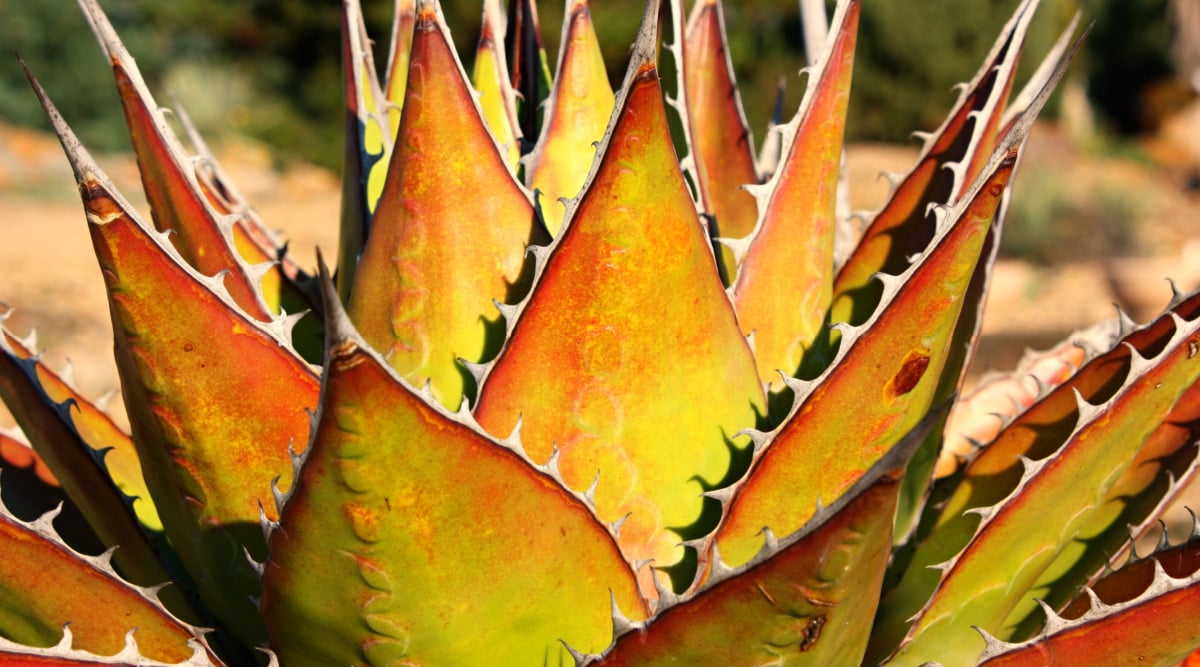

Agave montana, or mountain agave, is one different choice that resembles a giant artichoke. It has fleshy, broad, upright, apple-green leaves with big cinnamon-red enamel alongside the margins and a quick terminal spine. This solitary agave does not produce offshoots or pups as many various agaves do.
Mountain agave will likely be grown in USDA rising zones 7-10 and withstand temperatures as little as 10 ranges Fahrenheit (-12 ranges Celsius). It may probably survive in full photo voltaic to partial shade conditions. Its mature dimension is three to 4 toes tall and 4 to five toes broad.
Slim Leaf Century Plant
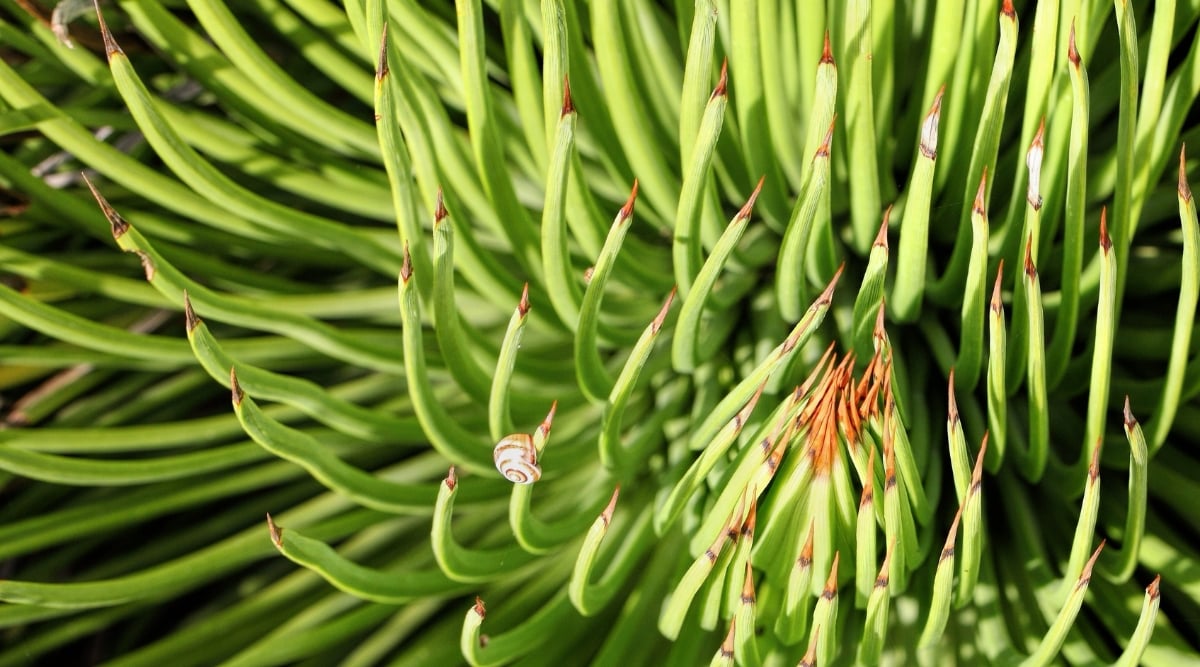

Agave striata can also be known as the narrow-leaf century plant. And for good goal! This choice has prolonged, slender foliage that is gray-green with a brown terminal spine. The leaves will likely be upright or curve upwards barely.
The foliage can also current slight purple tones all through chilly local weather. This choice produces plentiful pups and offshoots, so that you just’ll have the power to propagate many crops in case you happen to fall in love with it in your panorama.
This choice will likely be grown in USDA rising zones 7-11 and withstand temperatures as little as 10 ranges Fahrenheit (-12 ranges Celsius). It requires a full photo voltaic location to ensure a healthful and long-lived plant. Its mature dimension is one to 2 toes tall and two to a couple toes broad.
Whale’s Tongue
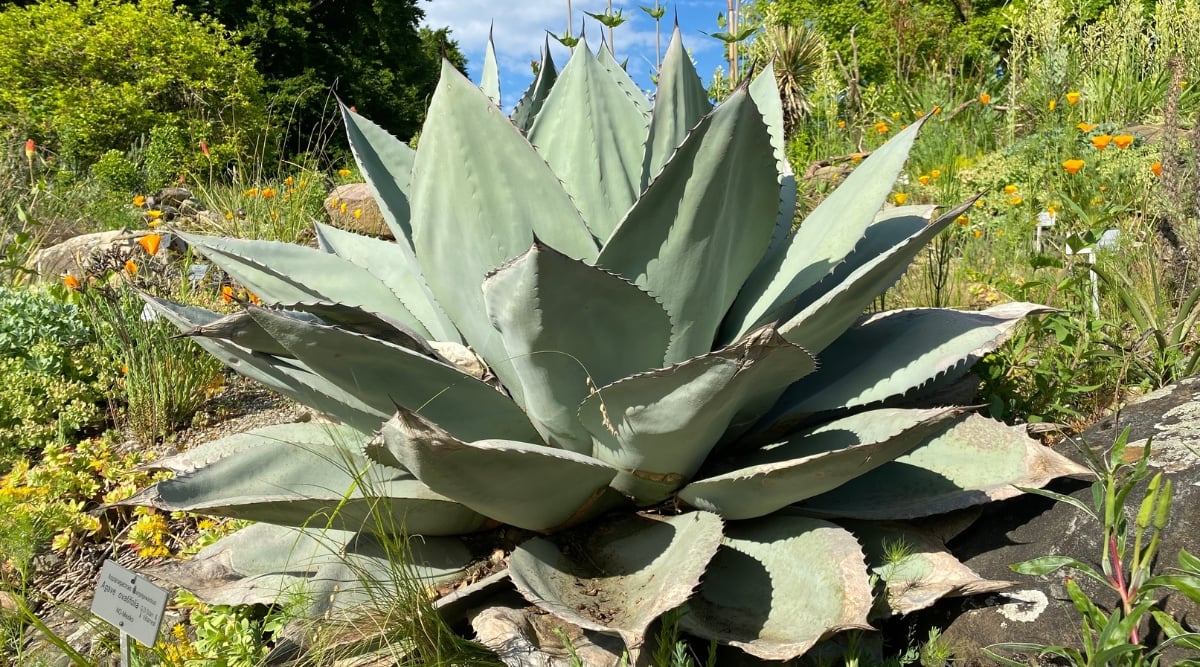

Agave ovatifolia could be typically known as whale’s tongue agave. The leaves are broad, cup-shaped, and differ in color from gray to powdery blue, much like a whale’s tongue! The leaves are lined with enamel alongside the margins and a tall terminal spine.
Whale tongue agave will likely be grown in USDA rising zones 7-11 and withstand temperatures as little as 10 ranges Fahrenheit (-21 ranges Celsius). It requires full photo voltaic to thrive. Its mature dimension is three to 4 toes tall and 4 to six toes broad.
Cabbage Head
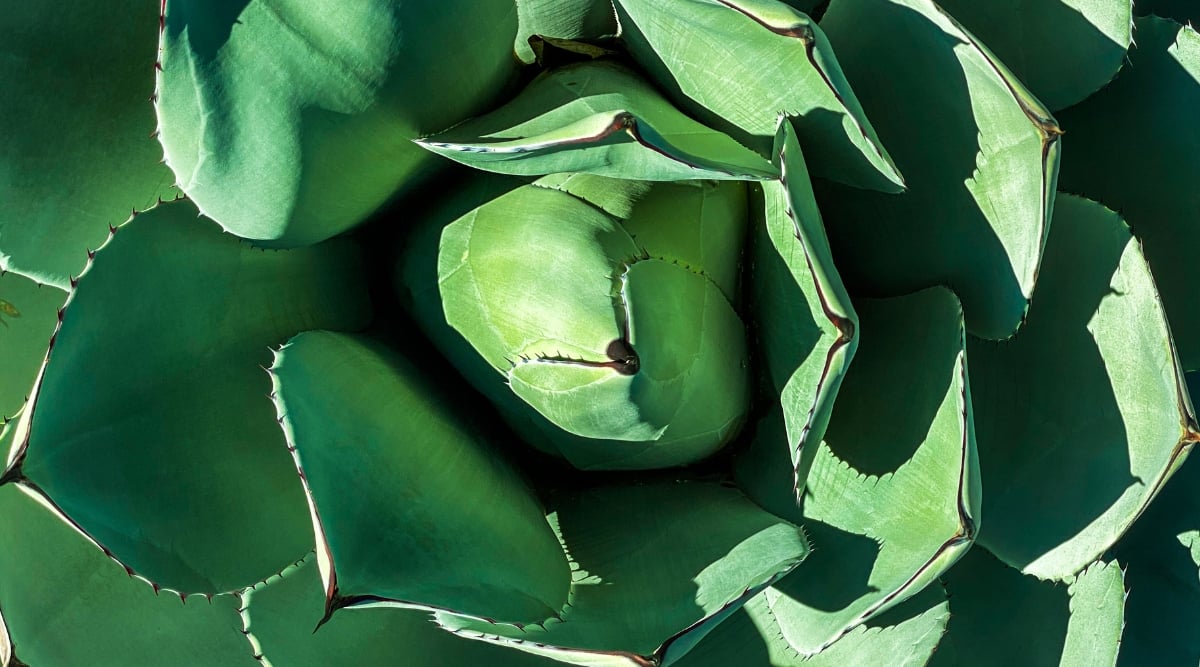

Agave parrasana, or cabbage head agave, resembles a head of cabbage, as its title would counsel. This award-winning agave is slow-growing and kinds a densely packed rosette of overlapping blue-gray leaves. It is a winner of the Award of Yard Profit given by the Royal Horticultural Society.
Cabbage head agave will likely be grown in USDA rising zones 7-11 and withstand temperatures as little as 10 ranges Fahrenheit (-21 ranges Celsius). It requires full photo voltaic and prefers barely acidic, sandy soil. Its mature dimension is one to 2 toes tall and broad. Nonetheless, this small plant can produce a flower stalk as a lot as 20 toes tall!
Queen Victoria Century Plant
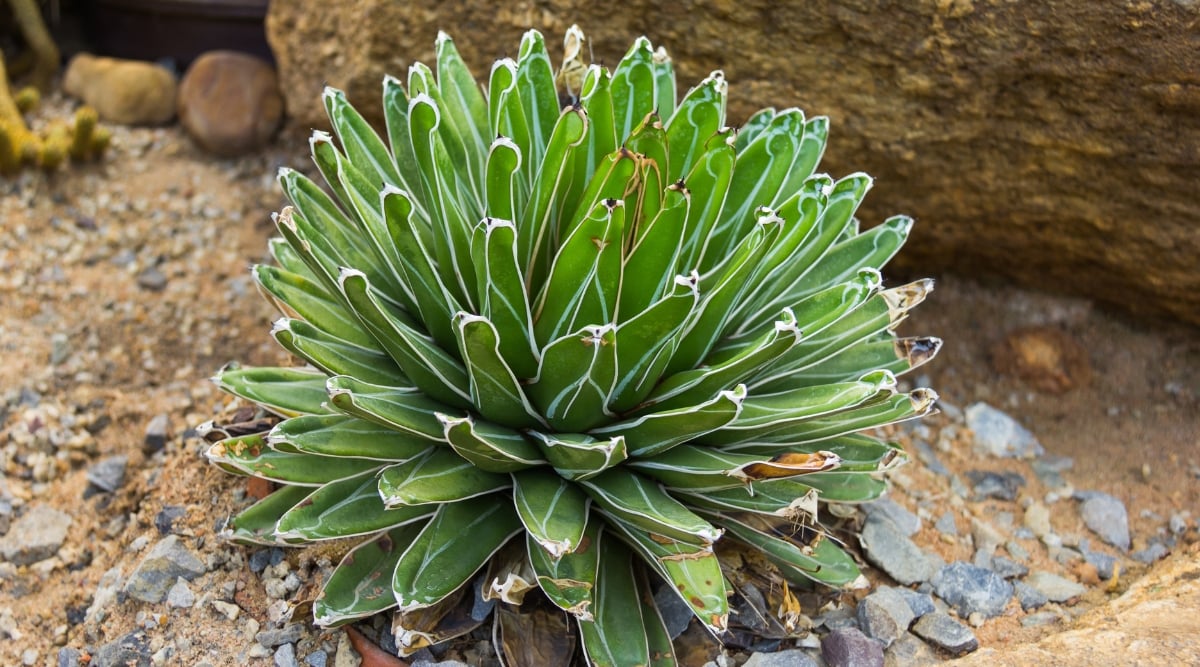

Agave victoriae-reginae, additionally known as the ‘Queen Victoria’ century plant, is a show-stopper of agave in your outdoor landscaping. We talked about its compact choice above as a terrific indoor yard addition, and the full-grown choice is just as attractive. It has the an identical darkish inexperienced leaves with vibrant white markings. Moreover it’s a winner of the Award of Yard Profit.
This choice will likely be grown in USDA rising zones 7-11 and withstand temperatures as little as 10 ranges Fahrenheit (-21 ranges Celsius). It requires full photo voltaic to provide probably the greatest and most beautiful leaves. Its mature dimension is one foot tall and one to 2 toes broad.
Final Concepts
Rising agaves every indoors and out can add a terrific low-maintenance factor to each your houseplant assortment or your outdoor landscaping. Whereas agaves are principally equated with scorching and dry climates, there are a few varieties that will survive cooler temperatures. In case you’re in North America, seek for varieties native to your house, as these will do best in your native climate.
[ad_2]
Provide hyperlink
